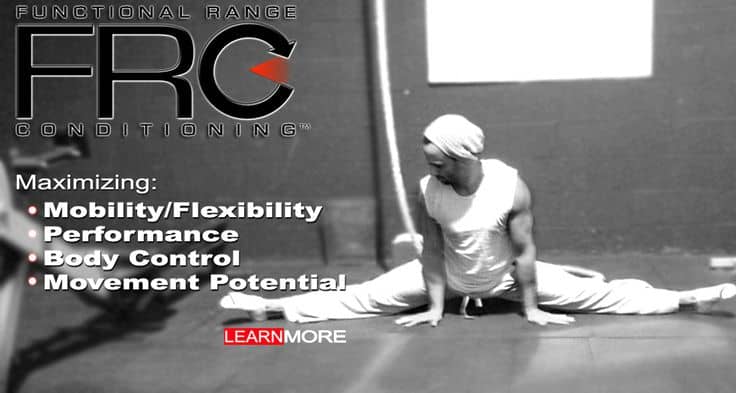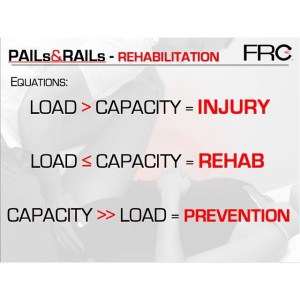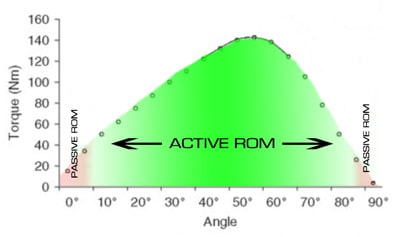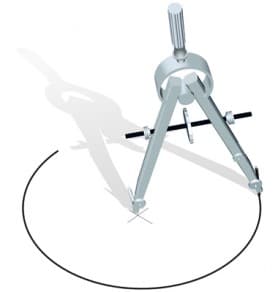
The Interesting Science Behind Functional Range Conditioning
Functional Range Conditioning (FRC) is a system of creating, controlling, and expanding useable range of motion, defined as mobility. Unlike flexibility which is typically achieved passively, FRC uses tension and isometrics to minimize neurological safeguards that inhibit mobility in the first place. It is designed to progressively convince the brain to release its protective stronghold on tissues at the cellular level. Instead of letting you drop into the splits and rip/injure everything on the way down, for example, the brain creates a painful stiffness telling you to stop. The brain halts movement when it perceives it as a threat.
Manipulating the brain, though, is tricky. It’s much smarter than those who study it. The honest ones in the throws of brain research will tell you they have no idea what’s going on up there. It’s all guesses and assumptions. Andreo Spina, creator of Functional Range Conditioning, wisely warned that,
“We need to be wary of believing our analogies”.
The brain is not a computer and nerves are not wires. The computer is our best attempt at re-creating our brain. Nerves are living, adaptable, sensory translations. Our attempts at explaining dynamic, complex elements for the purposes of understanding minimizes our efforts two-fold: 1. We belittle the capabilities of that in which we are studying, and 2. We grandiosely overestimate our comprehension of the matter. The result is a loss on both sides masquerading as gain.
What we do know a lot about, by comparison, is tissues. Every movement has a joint as a central factor. Joint function, then, has a direct effect on movement quality. If we pinpoint our training to focus on the joints, everything else should fall into place. By maximizing articular capacity, we can absorb any hiccups created by the brain and best prepare to ward off injury.
The ability of the muscles to create force peaks at the mid-point between two joints. The basic premise of Functional Range Conditioning is to capture passive ranges of motion in the end range and make them more active. By training muscular control in the long and short positions, we make these end ranges useable and improve the efficiency of everything in between.
In essence, we’re using the joints to communicate with the brain. We’re speaking to the cells directly in and around the joint capsule, and they relay our message to the central nervous system, telling it, “This is OK. Let them do this. Give them a few more degrees to work with.” Famously put another way, “Force is the language of cells, and movement is what we say.“
There is PLENTY of science behind these concepts. Each notion is backed by considerable research. Spina himself resigns to the fact that, “nothing he’s presenting is new.” It’s simply his interpretation of the literature. Almost exhaustive in depth, the research he shared during the introduction of his FRC seminar was fascinating — very different than most of us had been taught. Still, sound science makes sound sense. Here’s a very brief synopsis of some key points that made me rethink things:
1. All cells are connected by matrixes of mechanoreceptors. They are not distinct fluid sacs as most of us were taught. Force is felt and reacted to much faster than any chemical messengers.
2. Since there is no separation of cell layers, when we move, we are influencing DNA expression. Cells determine their environment by creating their own matrix, both within and outside of the ‘cell unit.’
3. There is no adhesive in the body. Tendons, ligaments, fascia, and muscle are all modified versions of the same ‘stuff’. They cannot be dissected away from each other. There are no “hamstrings”, for example — just stuff located in a particular area being asked to perform a particular task.
- Fascial lines do not exist. A fully connected web makes everything affective; particular lines of emphasis negate this.
- Dead anatomy is very different from living anatomy. Most of what has been studied has been dead anatomy. We can’t gather how things function by studying them in a non-functioning state. Living things function differently than dead things. We know very little about the system of living anatomy known as bioFlow.
4. The recurring rule of 10-15 degrees. Four different times in his lecture, Spina excitedly referred to the magical convergence in the literature of 15-degrees. We have 10-15 degrees more of passive range of motion than the CNS will allow us to access. The brain begins to brake movement it determines as risky 10-15 degrees short of ‘harm’. “Lift-offs” building capacity should happen at 10-15 degrees of maximum active range. Isometrics affect joint control 10-15 degrees on either side of the hold. The take home here might be to back-off 10-15 degrees of where a joint gives you issue and rebuild control from there.
5. Increasing joint degrees of freedom increases the body’s ability to interpret input and find pathways toward the optimal movement rep. If you think of your joints as a compass, the more ground they can cover, the more area your body can explore. There is no such thing as ‘muscle memory’. Great movers are adaptable. The better you get at movement, the more variability your body has to tap into to get the job done.
Understanding the science of a system gives you the context in which to practice it.
The next post in this series hopes to do just that:
Breaking down step one of FRC – controlled articular rotations (CARs).
[A COLLECTIVE LIBRARY OF FRC, FIGHTING MONKEY, PRI, & MOVNAT RESOURCES CAN BE FOUND HERE.]






